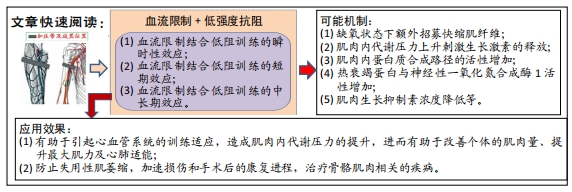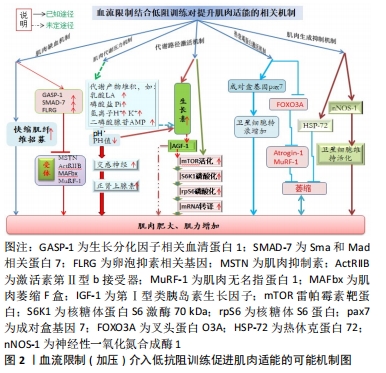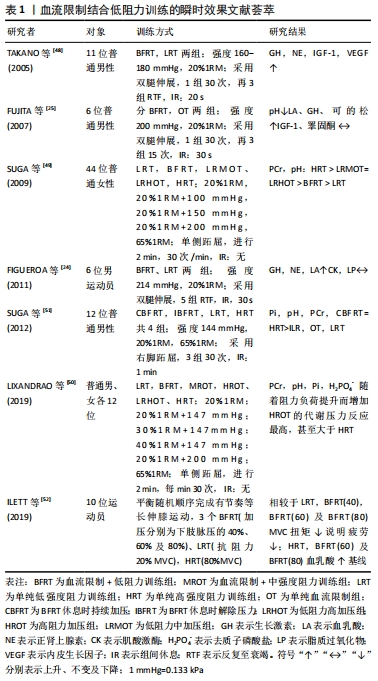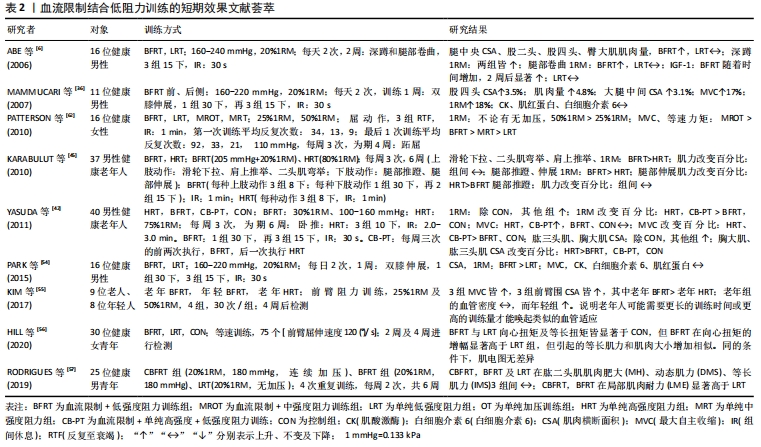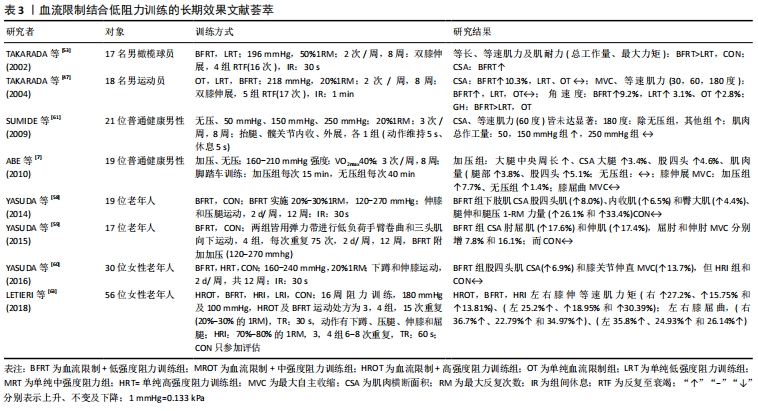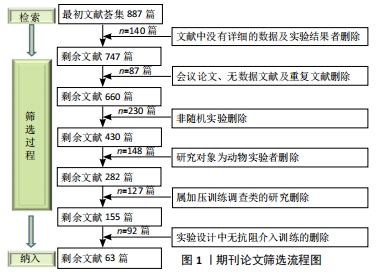[1] ROTA DS, THIAGO M, LIBARDI CA, et al. Concurrent training with blood flow restriction does not decrease inflammatory markers. Int J Sports Med. 2018;39(1):29-36.
[2] PATON CD, ADDIS SM, TAYLOR LA. The effects of muscle blood flow restriction during running training on measures of aerobic capacity and run time to exhaustion. Eur J Appl Physiol. 2017;117(12):2579-2585.
[3] KRAEMER WJ, RATAMESS NA. Fundamentals of resistance training: progression and exercise prescription. Med Sci Sports Exerc. 2004;36(4):674-688.
[4] MANIMMANAKOM A, HAMLIN MJ, ROBB JJ, et al. Effects of low-load resistance training combined with blood flow restriction or hypoxia on muscle function and performance in netball athletes. J Sci Med Sport. 2013;16(4):337-342.
[5] FROST DM, CRONIN J, NEWTON RU. A biomechanical evaluation of resistance fundamental concepts for training and sports performance. Sports Med. 2010;40(4):303-326.
[6] ABE T, KEARNS CF, SATO Y. Muscle size and strength are increased following walk training with restricted venous blood flow from the leg muscle, Kaatsu-walk training. J Appl Physiol. 2006;100(5):1460-1466.
[7] ABE T, SAKAMAKI M, FUJITA S, et al. Effects of low-intensity walk training with restricted leg blood flow on muscle strength and aerobic capacity in older adults. J Geriatr Phys Ther. 2010;33(1):34-40.
[8] CLARKSON MJ, CONWAY L, WARMINGTON SA. Blood flow restriction walking and physical function in older adults: a randomized control trial.Journal of Science and Medicine in Sport, 2017;20(12):1041-1046.
[9] TOTH MJ, CALLAHAN DM, MILLER MS, et al. Skeletal muscle fiber size and fiber type distribution in human cancer: effects of weight loss and relationship to physical function. Clin Nutr. 201635(6):1359-1365.
[10] LU ZH, WOO J, KWOK T. The Effect of Physical Activity and Cardiorespiratory Fitness on All-Cause Mortality in Hong Kong Chinese Older Adults. J Gerontol A Biol Sci Med Sci. 2018;73(8):1132-1137.
[11] AFSHARIPOUR B, MANZUR N, DUCHCHERER J, et al. Estimation of self-sustained activity produced by persistent inward currents using firing rate profiles of multiple motor units in humans. J Neurophysiol. 2020;124(1):63-85.
[12] GOULD JR, CLELAND BT, MANI D, et al. Motor unit activity in biceps brachii of left-handed humans during sustained contractions with two load types. J Neurophysiol. 2016;116(3):1358-1365.
[13] BERETTA-PICCOLI M, CESCON C, BARBERO M, et al. Reliability of surface electromyography in estimating muscle fiber conduction velocity: a systematic review. J Electromyogr Kinesiol. 2019;48:53-68.
[14] DOWNS ME, HACKNEY KJ, MARTIN D, et al. Acute Vascular and Cardiovascular Responses to Blood Flow-Restricted Exercise. Med Sci Sports Exerc. 2014;46(8): 1489-1497.
[15] ROSCHEL H, UGRINOWISTCH C, SANTOS AR, et al. Effect of eccentric action velocity on expression of genes related to myostatin signaling pathway in human skeletal muscle. Biol Sport. 2018;35(2):111-119.
[16] LAURENTINO G, UGRINOWITSCH C, ROSCHEL H, et al. Strength training with blood flow restriction diminishes myostatin gene expression. Med Sci Sports Exerc, 2012,44(3):406-412.
[17] GUO Y, WANG M, GE J, et al. Bioactive biodegradable polycitrate nanoclusters enhances the myoblast differentiation and in vivo skeletal muscle regeneration via p38 MAPK signaling pathway. Bioact Mater. 2020;5(3):486-495.
[18] LOENNEKE JP, WILSON GJ, WILSON JM. A mechanistic approach to blood flow occlusion. Int J Sports Med. 2010;31(1):1-4.
[19] MCFARLANE C, PLUMMER E, THOMAS M, et al. Myostatin induces cachexia by activating the ubiquitin proteolytic system through an NF-kappaB-independent, FoxO1-dependent mechanism. J Cell Physiol. 2006;209(2):501-514.
[20] KAYA M, KAYA D, IDIMAN E, et al. A Novel Biomarker in diabetic macular edema with serous retinal detachment: serum chitinase-3-like protein 1. Ophthalmologic. 2019;241(2):90-97.
[21] CARVALHO G, CARLA V, MANTOVANI CS, et al. CREB, NF-Y and MEIS1 conserved binding sites are essential to balance Myostatin promoter/enhancer activity during early myogenesis. Molecular Biology Reports. 2017;44(5):419-427.
[22] JUANG J, YIN H, ZHANG C, et al. Effects of E. Coli Infection on the Expressions of TGF-β/Smads Signaling Pathway in Broiler Intestine. Poult Sci. 2020;22(1): eRBCA-2019-1101.
[23] ZHANG ZP, JIANG HX, LI X, et al. MiR-92a regulates brown adipocytes differentiation, mitochondrial oxidative respiration, and heat generation by targeting SMAD7. J Cell Biochem. 2020;121(8-9):3825-3836.
[24] FIGUEROA A, VICIL F. Post-exercise aortic hemodynamic responses to low-intensity resistance exercise with and without vascular occlusion. Scand J Med Sci Sports. 2011;21(3):431-436.
[25] FUJITA S, ABE T, DRUMMOND MJ, et al. Blood flow restriction during low-intensity resistance exercise increases S6K1 phosphorylation and muscle protein synthesis. J Appl Physiol. 2007;103(3):903-910.
[26] REEVES GV, KRAEMER R, HOLLANDER DB, et al. Comparison of hormone responses following light resistance exercise with partial vascular occlusion and moderately difficult resistance exercise with occlusion. J Appl Physiol. 2006; 101(6):1616-1622.
[27] WILK M, KRZYSZTOFIK M, GEPFERT M, et al. Technical and Training Related Aspects of Resistance Training Using Blood Flow Restriction in Competitive Sport - A Review. J Hum Kinet. 2018;65(1):249-260.
[28] CHRISTIANSEN D, EIBYE KH, HOSTRUP M, et al. Blood flow-restricted training enhances thigh glucose uptake during exercise and muscle antioxidant function in humans. Metabolism. 2019;98:1-15.
[29] YANAGISAWA O, SANOMURA M. Effects of low-load resistance exercise with blood flow restriction on high-energy phosphate metabolism and oxygenation level in skeletal muscle. Int Med Appl Sci. 2017;9(2):67-75.
[30] HACKNEY KJ, DOWNS ME, PLOUTZ SL. Blood flow restricted exercise compared to high load resistance exercise during unloading. Aerosp Med Hum Perform. 2016;87(8):688-696.
[31] LINERO C, CHOI SJ. Effect of blood flow restriction during low-intensity resistance training on bone markers and physical functions in postmenopausal women. J Exerc Sci Fit. 2021;19(1):57-65.
[32] AAGAARD P, JACOBSEN M, JENSEN KY, et al. Effects of Chronic Blood-Flow Restriction Exercise on Skeletal Muscle Size and Myogenic Satellite Cell Expression. Med Sci Sports Exerc. 2016;48(5):1032-1033.
[33] SOUZA EO, TRICOLI V, BUENO JC, et al. The acute effects of strength, endurance and concurrent exercises on the Akt/mTOR/p70S6K1 and AMPK signaling pathway responses in rat skeletal muscle. Braz J Med Biol Res. 2013;46(4):343-347.
[34] JASTRZEBSKI K, HANNAN KM, TCHOUBRIEVA EB, et al. Coordinate regulation of ribosome biogenesis and function by the ribosomal protein S6 kinase, a key mediator of mTOR function. Growth Factors. 2007;25(4):209-226.
[35] FRY CS, GLYNN EL, DRUMMOND MJ, et al. Blood flow restriction exercise stimulates mTORC1 signaling and muscle protein synthesis in older men. J Appl Physiol. 2010;108(5):1199-1209.
[36] MAMMUCARI C, MILAN G, ROMANCELLO V, et al. FoxO3 controls autophagy in skeletal muscle in vivo. Cell Metab. 2007;6(6):458-471.
[37] MANINI TM, VINCENT KR, LEEUWENBURGH CL, et al. Myogenic and proteolytic mRNA expression following blood flow restricted exercise. Acta Physiologica. 2011;201(2):255-263.
[38] O’NEILLl BT, BHARDWAJ G, PENNIMAN CM, et al. FoxO Transcription Factors Are Critical Regulators of Diabetes-Related Muscle Atrophy. Diabetes. 2019;68(3):556-570.
[39] LOUIS E, RAUE U, YANG Y, et al. Time course of proteolytic, cytokine, and myostatin gene expression after acute exercise in human skeletal muscle. J Appl Physiol, 2007;103(5):1744-1751.
[40] ISABEL MA, BELEN GSA, PRIEGO T, et al. Formoterol treatment prevents the effects of endotoxin on muscle TNF/NF-kappa B, Akt/mTOR, and proteolytic pathways in a rat model. Role of IGF-I and miRNA 29b. Am J Physiol Endocrinol Metab. 2018;315(4):E705-E714.
[41] LIU, XY, YU RH, SUN LJ, et al. The nuclear phosphatase SCP4 regulates FoxO transcription factors during muscle wasting in chronic kidney disease. Kidney Int. 2017;92(2):336-348.
[42] YASUDA T, OGASAWARA, R, SAKAMAKI, M, et al. Combined effects of low-intensity blood flow restriction training and high-intensity resistance training on muscle strength and size. Eur J Appl Physiol. 2011;111(10):2525-2533.
[43] YANG QM, LI Y, ZHANG XL, et al. Zac1/GPR39 phosphorylating CaMK-II contributes to the distinct roles of Pax3 and Pax7 in myogenic progression. Biochim Biophys Acta Mol Basis Dis. 2018;1864(2):407-419.
[44] NIELSEN JL, AAGAARD P, BECH RD, et al. Proliferation of myogenic stem cells in human skeletal muscle in response to low-load resistance training with blood flow restriction. J Physiol. 2012;590(17):4351-4361.
[45] KARABULUT M, ABE T, SATO Y, et al. The effects of low-intensity resistance training with vascular restriction on leg muscle strength in older men. Eur J Appl Physiol. 2010;108(1):147-155.
[46] GRGIC J, HOMOLAK J, MIKULIC P, et al. Inducing hypertrophic effects of type I skeletal muscle fibers: a hypothetical role of time under load in resistance training aimed at muscular hypertrophy. Med Hypotheses. 2018;112:40-42.
[47] TAKARADA Y, TSURUTA T, ISHII N. Cooperative effects of exercise and occlusive stimuli on muscular function in low-intensity resistance exercise with moderate vascular occlusion. Japan J Physiol. 2004;4(6): 585-592.
[48] TAKANO H, MORITA T, IIDA H, et al. Hemodynamic and hormonal responses to a short-term low-intensity resistance exercise with the reduction of muscle blood flow. Eur J Appl Physiol. 2005;95(1):65-73.
[49] SUGA T, OKITA K, Morita N, et al. Intramuscular metabolism during low intensity resistance exercise with blood flow restriction .J Appl Physiol. 2009;106(4): 1119-1124.
[50] LIXANDRAO ME, ROSCHEL H, UGRINOWITSCH C, et al. Blood-flow restriction resistance exercise promotes lower pain and ratings of perceived exertion compared with either high- or low-intensity resistance exercise performed to muscular failure. J Sport Rhabil. 2019;28(7):706-710.
[51] SUGA T, OKITA K, TAKADA S, et al. Effect of multiple set on intramuscular metabolic stress during low-intensity resistance exercise with blood flow restriction. Eur J Appl Physiol. 2012;112(11):3915-3920.
[52] ILETT MJ, RANTALAINEN L, KESKE MA, et al. The effects of restriction pressures on the acute responses to blood flow restriction exercise. Front Physiol. 2019; 10:1018-1024.
[53] TAKARADA Y, SATO Y, ISHII N. Effects of resistance exercise combined with vascular occlusion on muscle function in athletes. Eur J Appl Physiol. 2002;86(4):308-314.
[54] PARK SY, KWAK YS, HARVESON A, et al. Low intensity resistance exercise training with blood flow restriction: insight into cardiovascular function, and skeletal muscle hypertrophy in humans. Korean J Physiol Pharmacol. 2015;19(3):191-196.
[55] KIM J, LANG JA, PILANIA N, et al. Effects of blood flow restricted exercise training on muscular strength and blood flow in older adults. Exp Erontol. 2017;99:127-132.
[56] HILL EC, HOUSH TJ, KELLER JL, et al. Low-load blood flow restriction elicits greater concentric strength than non-blood flow restriction resistance training but similar isometric strength and muscle size. Eur J Appl Physiol. 2020;120(2):425-441.
[57] RODRIGUES NG, GOMES DS, FREITAS L, et al. Effects of strength training with continuous or intermittent blood flow restriction on the hypertrophy, muscular strength and endurance of men. Acta Scientiarum-Health Sci. 2019;41:e42273.
[58] YASUDA T, FUKUMURA K, FUKUDA T, et al. Muscle size and arterial stiffness after blood flow-restricted low-intensity resistance training in older adults. Scand J Med Sci Sports. 2014;24(5):799-806.
[59] YASUDA T, FUKUMURA K, UCHIDA Y, et al. Effects of low-load, elastic band resistance training combined with blood flow restriction on muscle size and arterial stiffness in older adults. J Gerontol A Biol Sci Med Sci. 2015;70(8):950-958.
[60] YASUDA T, FUKUMURA K, TOMARU T, et al. Thigh muscle size and vascular function after blood flow-restricted elastic band training in older women. Oncotarget. 2016;7(23):33595-33607.
[61] SUMIDE T, SAKURABA K, SAWAKI K, et al. Effect of resistance exercise training combined with relatively low vascular occlusion. J Sci Med Sport. 2009;12(1):107-112.
[62] PATTERSON SD, FERGUSON RA. Increase in calf post-occlusive blood flow and strength following short-term resistance exercise training with blood flow restriction in young women. Eur J Appl Physiol. 2010;108(5):1025-1033.
[63] LETIERI RV, TEIXEIRA AM, FURTADO GE, et al. Effect of 16 weeks of resistance exercise and detraining comparing two methods of blood flow restriction in muscle strength of healthy older women: a randomized controlled trial. Exp Gerontol. 2018;114:78-86.
|
